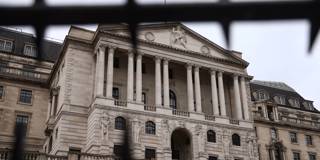After years of persistently low inflation, tepid growth, and rising inequality, central banks can no longer justify a monetary-policy regime that targets price stability. To strengthen the post-pandemic recovery, they must shift gears, by adopting a policy objective that actually has some bearing on the real economy.
LONDON – Ever since Western central banks started targeting inflation in the early 1990s, some economic analysts – not least Samuel Brittan of the Financial Times – have been pointing out that it would be better to target nominal GDP. As the numerical value of all output or expenditure in an economy, nominal GDP combines a country’s real economic output with its associated prices or costs.
Proponents of nominal-GDP targeting argue that a consumer-price target like inflation is too narrow to be useful to the society that the central bank serves. And central banks from the Reserve Bank of Australia to the US Federal Reserve do supplement the inflation-targeting regime with an additional target tied to the real economy. The Fed, for example, has a stated commitment to pursue “full employment” alongside price stability.
Still, among central banks with a formal inflation-targeting mandate, full-blown nominal-GDP targeting has always been rejected. There are two main reasons for this. First, it was widely believed that insofar as monetary policy has a delayed effect on the real economy, nominal-GDP targeting would be overly responsive. Failing to account for the lag time, it might allow inflation to get out of control. But such assumptions are an artifact of the early 1990s, when monetary policy, adhering to the preceding decades’ orthodoxy, allowed for a lag of as long as two years.

LONDON – Ever since Western central banks started targeting inflation in the early 1990s, some economic analysts – not least Samuel Brittan of the Financial Times – have been pointing out that it would be better to target nominal GDP. As the numerical value of all output or expenditure in an economy, nominal GDP combines a country’s real economic output with its associated prices or costs.
Proponents of nominal-GDP targeting argue that a consumer-price target like inflation is too narrow to be useful to the society that the central bank serves. And central banks from the Reserve Bank of Australia to the US Federal Reserve do supplement the inflation-targeting regime with an additional target tied to the real economy. The Fed, for example, has a stated commitment to pursue “full employment” alongside price stability.
Still, among central banks with a formal inflation-targeting mandate, full-blown nominal-GDP targeting has always been rejected. There are two main reasons for this. First, it was widely believed that insofar as monetary policy has a delayed effect on the real economy, nominal-GDP targeting would be overly responsive. Failing to account for the lag time, it might allow inflation to get out of control. But such assumptions are an artifact of the early 1990s, when monetary policy, adhering to the preceding decades’ orthodoxy, allowed for a lag of as long as two years.